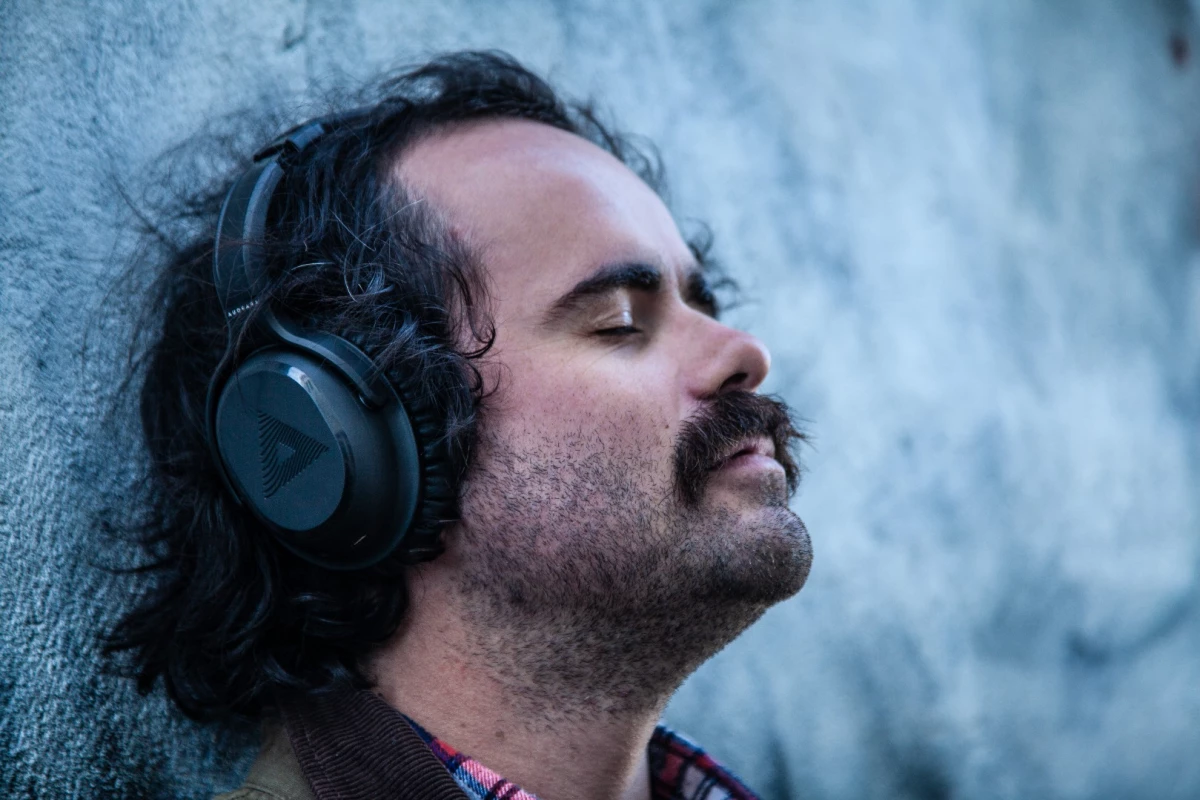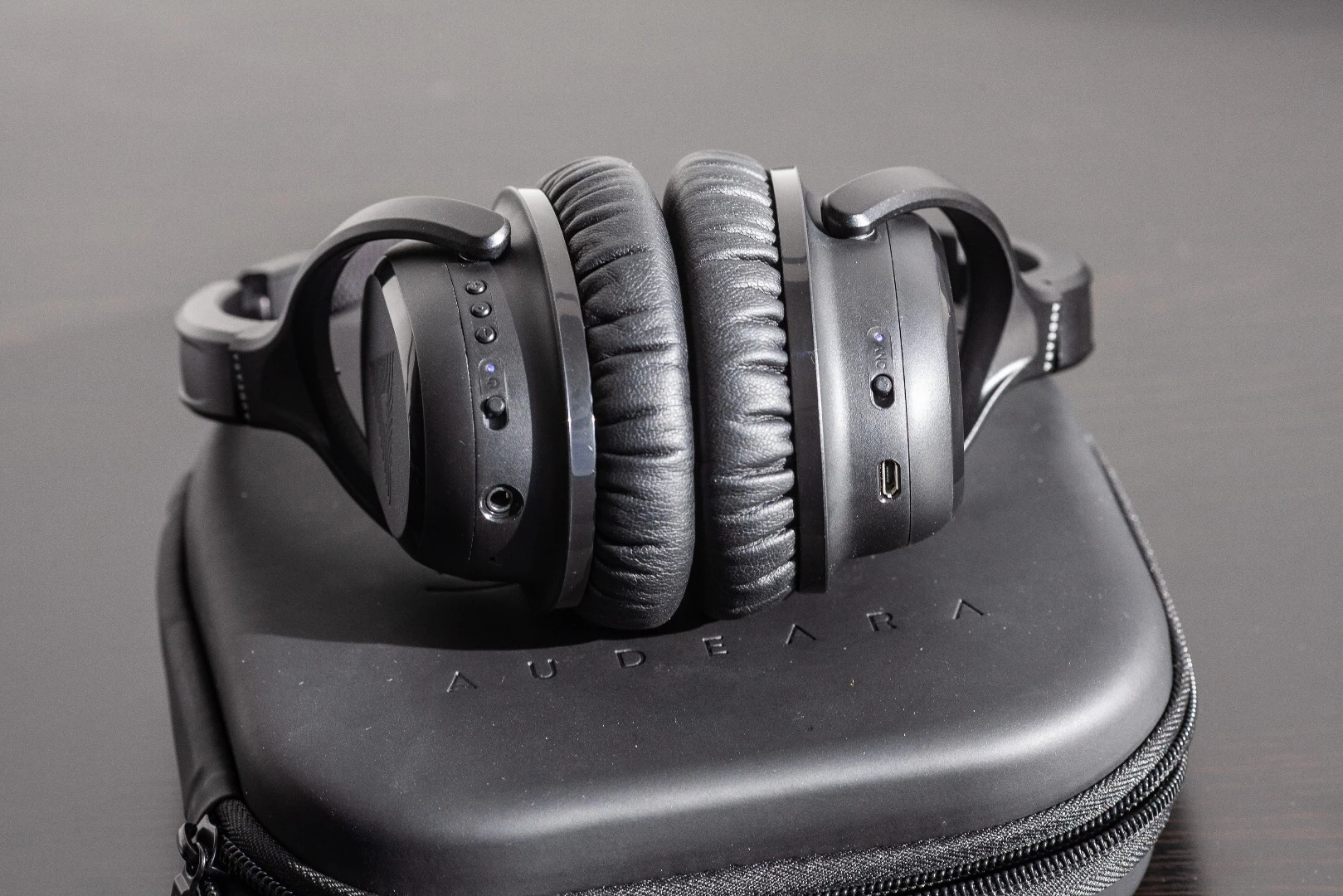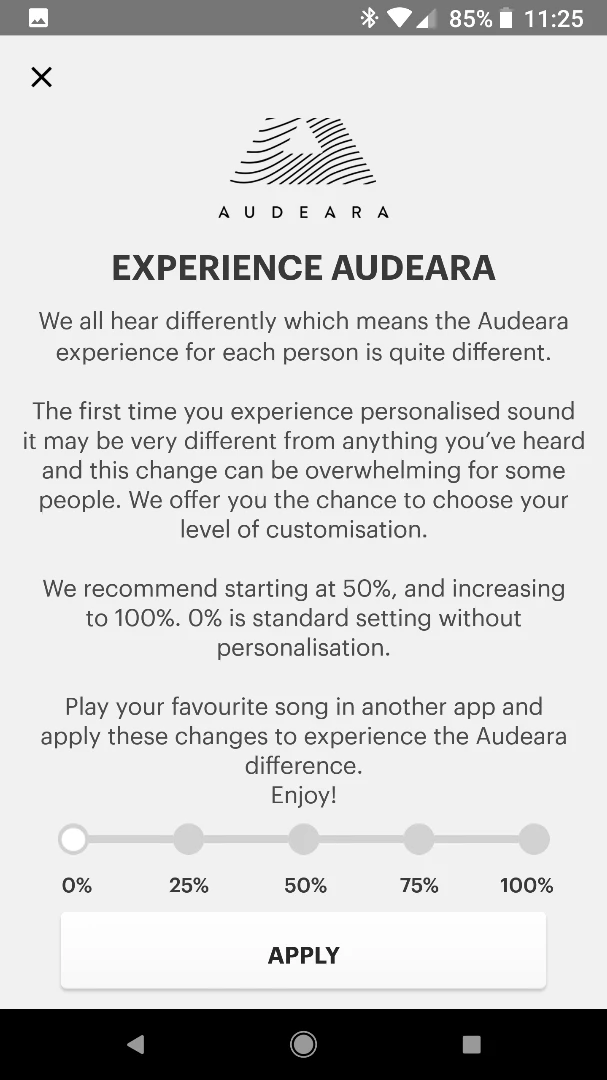There's no such thing as good-sounding headphones – only headphones that match the ears that are listening to them. Audeara's A-01 headphones use clinically-approved hearing response tests to adjust to every ear for incredible clarity and detail, but the results take some getting used to.
Hearing-adaptive headphones
Australian start-up Audeara hit on the idea of hearing-adaptive headphones about the same time as its compatriot Nura. If you haven't come across the concept yet – and it's starting to spring up a bit now – here's the idea in a nutshell.
Everyone's hearing is different. It starts off as an anatomical thing; each ear canal is differently shaped, as are the tiny bones in each inner ear, and the hearing neurology of each brain. Add in the tragically deleterious effects of age, noise exposure, and tinnitus, and the EQ curve of every ear starts to look very different. The normal range of hearing ability at any given point on an EQ curve varies by as much as 20 decibels, or up to eight clicks on a volume slider. Even your own two ears have their own frequencies they're sensitive to or struggle to hear.
The idea of adaptive headphones is to run the listener through a hearing test, then develop a special equalization profile that personalizes the cans to boost the frequencies you struggle to hear, and roll back the ones you perceive louder.
The Nuraphones do this using a bizarre automated process that fires weird sounds into your ears for about a minute, then generates a hearing profile for you. But this is done using an obscure otoacoustic emission test that audiologists have found no use for beyond working out if newborn babies are deaf.
If you go to an audiologist, you're going to get a standardized, subjective hearing test in which you go through a series of frequencies and adjust their volumes until you can only just hear them. It takes longer – maybe 10 minutes – but it's the industry standard for hearing specialists, and that's the process that Audeara decided to go with on its A-01 adaptive headphones.

Audeara A-01: the basics
Packaging to product, these things are beautifully put together. They feel great on my noggin over extended periods, and right out of the box without any personalization, they deliver a powerful, spacious and pretty sound – to my ears.
They've got nice active noise canceling that I'd put on the level of some of my Sennheiser gear, as well as high-quality Qualcomm aptX audio, which is basically high-def 24-bit Bluetooth, so you don't lose any audio definition by going wireless.
The wireless range when connected to my phone seems to be around 20 m (65 ft) if you've got nothing blocking the way. They don't like working through walls, so I can't keep rockin' out in the bathroom if I don't bring my phone, but this is fairly standard, and rockin' out in the bathroom can have some unintended consequences anyway.
They come with a little hardcase, as well as a twin-plug airplane adapter, a 3.5 mm aux cable, a MicroUSB charge cable and a 1/4-inch converter plug should you need one. Battery life is pretty absurd; some 35 hours if you run noise canceling and Bluetooth, or 45 hours if you turn the noise canceling off.
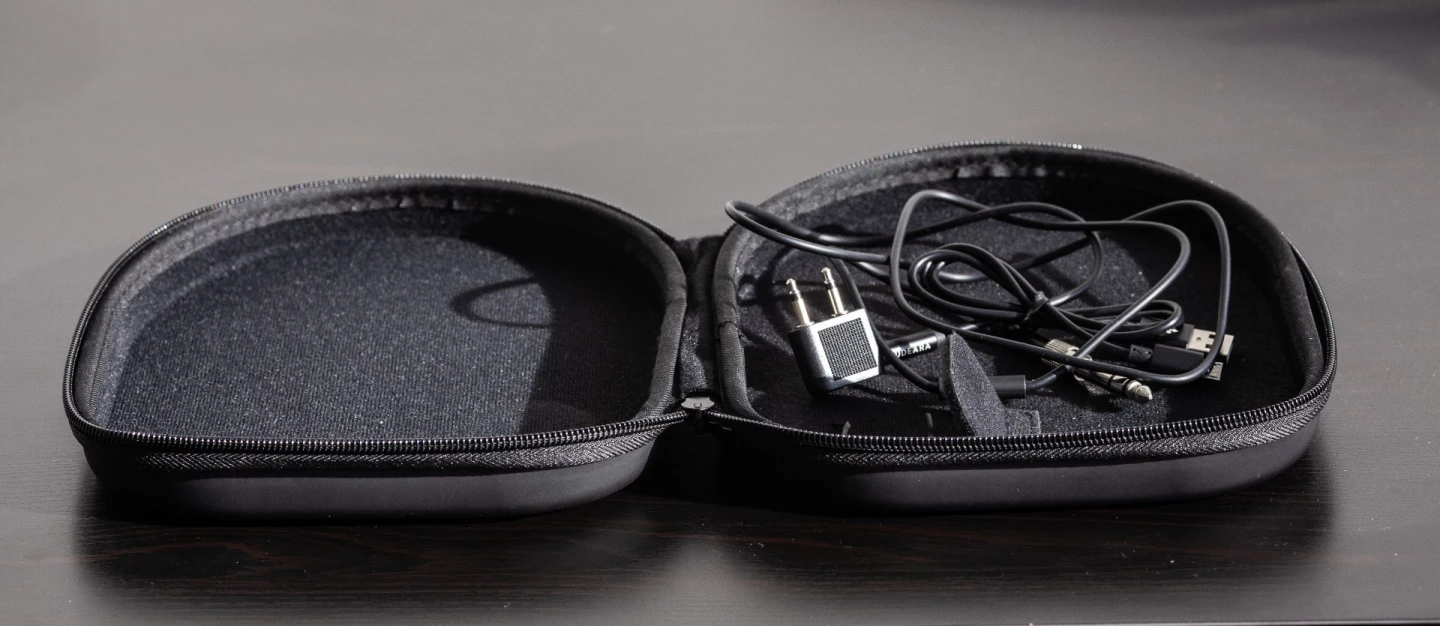
There's also a built-in mic that lets you talk on the phone as if you're wearing a headset. It's a solid and well thought-out package, apart from the fact that there's nowhere to stow your cords and adapters in the hardcase, so they tend to fall out on planes.
The design seems to make for a fair bit of sound bleed, as I discovered when the whole office started singing along to a Whitney Houston tune I thought I was listening to by myself – so be aware of that if you choose to crank them up on the bus, or play N.W.A. while you walk past a policeman.
The Audeara adaptive effect
There's some initial fidgetiness getting Bluetooth connected properly. For some reason Audeara requires you not only to pair and connect via your phone's Bluetooth menu, but then to connect again once that's connected through the Audeara app. This is only to adjust the profile settings, but it's an early hitch in the process.
Once I was in, I created a new hearing profile and started out on the hearing test. There are three versions, depending on how long you want to spend on it.
I went for the full-fat, 31-band per ear high definition process and found it highly educational. There are clearly frequencies that stick out, and others you need to boost before you can hear them at all. At the end, you're presented with a hearing curve for each ear. I was mildly chuffed to see mine come out so symmetrically, and I blame the ride cymbal from my drumming days for my lack of top-end in my right ear.
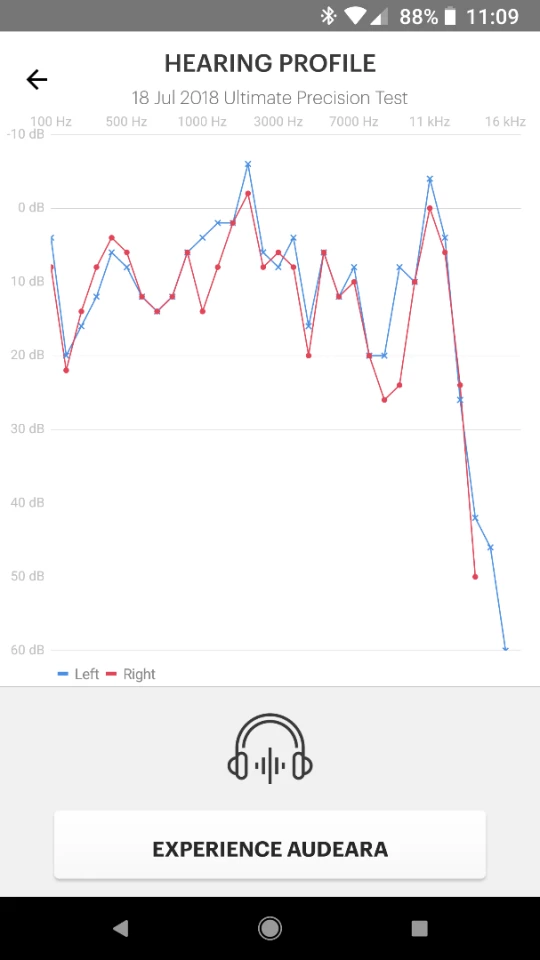
From here, you're ready to "experience Audeara" by getting some music going, and choosing how far you want to go with the effect – you can adjust the A-01's EQ curve by moving it 0, 25, 75 or 100 percent of the way toward the "ideal" curve developed in response to your hearing test. I was excited to hear the difference, because the initial, unpersonalized profile of the A-01s sounded pretty great to me out of the box.
I went straight to 100 percent despite Audeara's warning to start at 50 percent. And I was shocked. Not just by what I could hear – detail and clarity went through the roof – but by what was immediately missing: low end bass and overall volume.
I made some faces and tried again, moving the slider back down to 50 percent. Half the bass came back. I made some more faces and grabbed a few colleagues from the New Atlas office, who went through the process and made the same faces and found the same thing. The A-01s help you hear exquisite levels of detail, but the more you turn up the personalization effect, the more they seem to rob you of low-end feel.
So, I made an awkward phone call to Audeara Head of Media and Communications Isobel Young, asking if we were doing something wrong. Nope, she reassured me, that's quite a common reaction:
"To be perfectly honest, it is going to sound different," Young explained. "And for some people that immediate reaction [isn't great]. But that bass is what your brain's trained to listen for. This is not what you expect. You've got to give your brain time to adjust. Maybe start at 25 percent, give it a day or two, then bump it up slowly. It's more about being able to hear all of the sounds. See how you feel after a couple of days with the personalization on, and then flicking it back off. That's when people tend to start realizing what they're missing [when it's getting blown out by loud bass]."
So that's what I did. And to an extent, it's true. Without the standard profile to compare it to, you adjust to expect less bass. And once you stop concentrating on that, you're free to enjoy a crisp, present soundscape that enhances the separation of instruments and makes you go looking for audiophile-grade recordings to dig into.
Go back toward 0 percent after a couple of days, and the bass comes back in, but you can feel it stomping on everything else. You're presented with the dilemma: how much detail and intellectual stimulation are you prepared to sacrifice for the hormone rush of low-end feel? For me, it depends on the music. If you want to get wrapped up in virtuosity and technique, say with some Pat Metheney Group or Chick Corea, leave it at 75 or 100 percent and sit in a quiet room, and the experience is terrific. But reach for anything from the dance or rock departments, and you'll want 25 percent at the most – listening to that kind of music without any grunt feels like doing it a great disservice.
It doesn't help that it's not a super quick process to adjust it. If you've been listening at one setting for a while and you want to switch, the app has to connect to the A-01s, then re-upload your hearing profile – that's 20 seconds – before you can adjust the percentage up and down.
Look, perhaps it's fair to argue that the competing Nura headphones use a few mildly dirty tricks to bump up their wow factor. The initial profile on the Nuras doesn't sound great, setting a bland reference point so your profile can sound better straight away. And then, the first thing you get to do once you apply your personal profile is to crank up a skin-conduction, bass-boosting "immersion mode" that, at the top end, smashes out so much bass that your whole head starts tickling. It's way too much – I run it at about 40 percent – but it's fun, and it blows people away at their first sitting.
Audeara's A-01s are the opposite. They don't give you wow factor, they're actively disappointing the first time you click your personal profile on, and they take time to grow on you. And they do grow on you. And I appreciate the crystal clarity, and the insight it gives me into vocal and instrumental technique, as well as a beautiful soundstage that puts me right in the head of the producer.
But sometimes a man needs to goddamn rock out, and as much as this may be the "correct" profile for my ears, it doesn't give me what I need in the bottom end. Millions of years of evolution have shaped my brain to understand that loud, low sounds signal danger. There is an autonomic release of adrenaline and an exquisite sensation of fear, which can be enjoyed as pure awe when I know I'm totally safe. People crank the bass for a reason, bass drops make people lose their freakin' minds on dancefloors, and many types of music are designed to use it to play your emotions like a fiddle. I don't feel like I'm breaking any new ground here.
If I was Audeara, I'd think about stepping back from the extremist position of "this is what's best for you, whether you like it or not," and give people some more options on how to enjoy these things. It's all in the software, the A-01 hardware has more than enough horsepower to show you a good time before personalization.
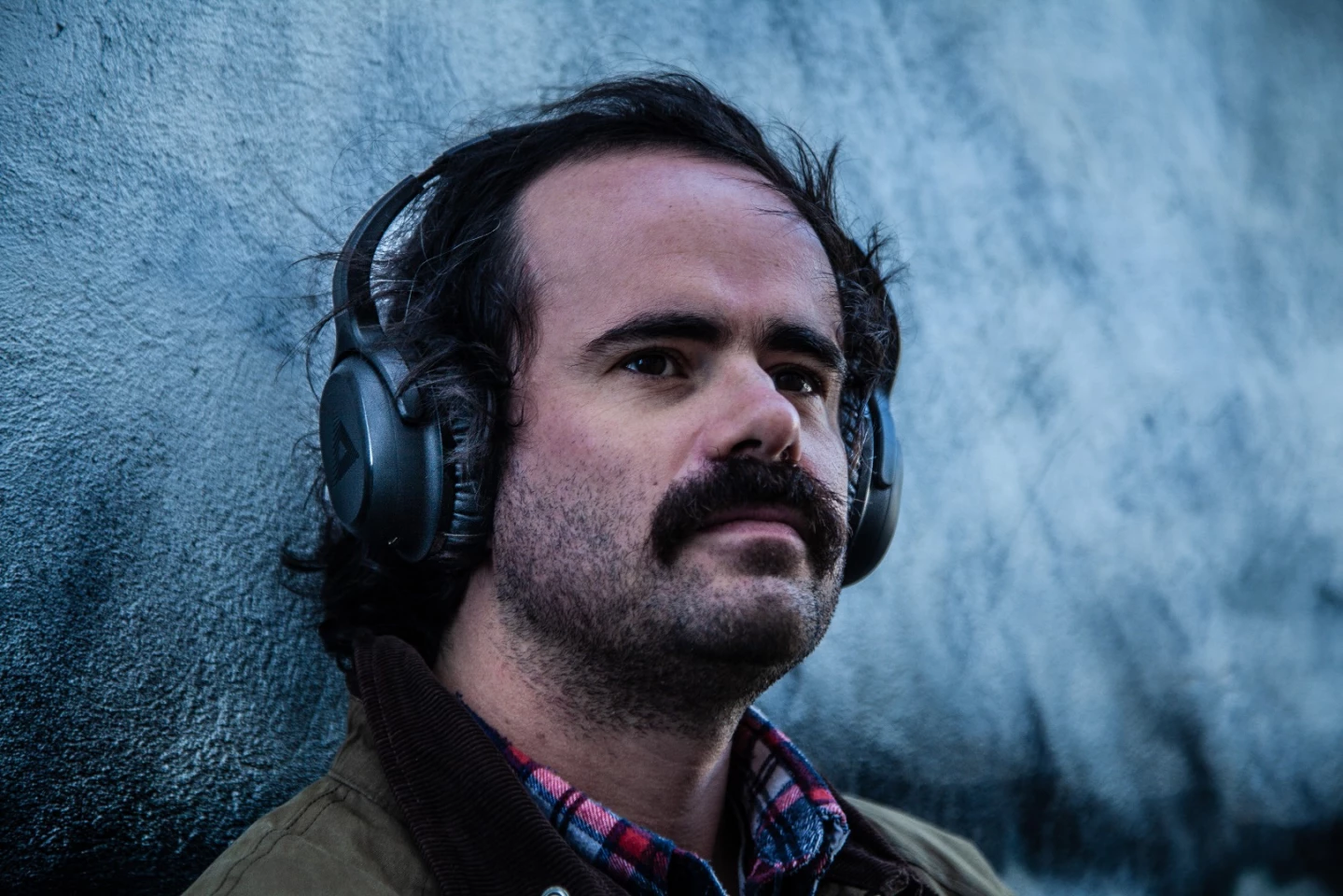
Addendum: my dad tries Audeara
One thing Young mentioned to me on our phone call was how much terrific feedback Audeara has been getting from folks with hearing impairments. So I popped round to visit my folks and got my dad to run himself a profile. He's on his way to 70, and definitely has difficulty hearing conversations in a noisy restaurant, but functions just fine for the most part without ever having been fitted with a hearing aid. I'd say he's pretty representative of his age group in that regard.
Looking at his hearing chart compared to mine was a rude shock. If my hearing dropped off a bit toward the top end beyond 11 kHz, his absolutely fell off a cliff at 2 kHz. My mum, who I wouldn't have thought of as somebody with hearing issues at all, had an eerily similar chart. This is what we've all got to look forward to, it seems; enjoy your music while you can.
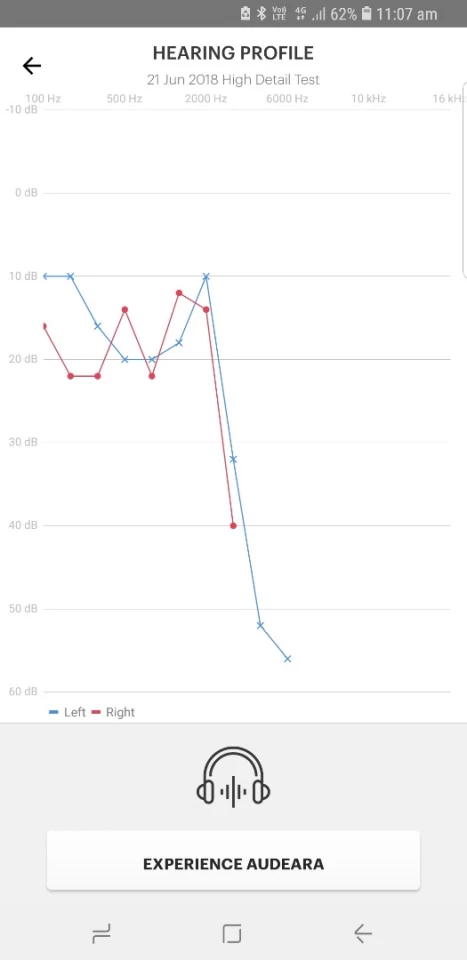
When dad ran that personalization profile – a profile that sounded tinny as all hell to me – he was delighted. "At 50 percent," he told me, "they sound as good as my Bose QuietComfort 35s. At 100 percent, they sound a lot better and clearer." Most headphones, he said, sound woofy and muddy to him, with no definition. These didn't totally make up for his hearing loss, but they sounded better than anything else he'd tried, and he loved the fact they're wireless.
He didn't rate the noise canceling algorithm as highly as the Bose gear when he took them on a flight, and he was particularly annoyed when he dropped all the cables and connectors on the floor because there's nowhere to store them in the hardcase, but in general he was impressed with the sound.
So there we are. The adaptive headphone space seems to be taking off at the moment as people begin to realize the strange fact that there may be no such thing as good-sounding headphones – only headphones that match the ears that are listening to them.
Audeara takes a staunchly clinically-approved approach to the problem, which results in a sound that takes a fair amount of getting used to. Overall, I can see the validity of this approach, but I can also see how they're going to disappoint some people in their current form. Here's hoping they fix it in a software patch so the A-01s can be a better and more involving experience for a wider range of people.
Source: Audeara
